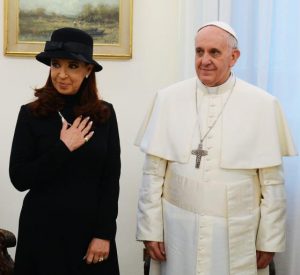
⚫ Undergoing religious initiation ceremonies, such as baptism, confirmation, and bar mitzvah, predicts a lower likelihood of disaffiliating from religion, although not later religious commitment, according to a new study published in the Journal for the Scientific Study of Religion (online in December). Samuel Perry of the University of Oklahoma and Kyle Longest of Furman University analyzed the National Study of Youth (surveys 1 and 4), allowing them to study the effects of these rites of passage over time. The researchers found that young adults who claimed a religious affiliation and experienced a religious rite of passage were over 30 percent less likely to disaffiliate than youth who did not go through such rites. But Perry and Longest add that the predictive power of these rites regarding young adult affiliation did not seem to vary by specific religious tradition or rite, suggesting that it is the nature of the ritual itself rather than the specific religious content of the rite that may have an effect.
(Journal for the Scientific Study of Religion, https://onlinelibrary.wiley.com/journal/14685906)

⚫ Many American churchgoers, especially liberal Protestants, report significant conflict with their congregations, something which may have fed the trend of people disaffiliating from their religions over political issues, according to a study by Sean Bock of Harvard University. In a paper presented at the late-October meeting of the Society for the Scientific Study of Religion in St. Louis, Bock noted that while there is evidence for the thesis that part of the reason for the growth of the non-affiliated, or “nones,” is their protest over the politicization of churches since the 1990s, there has been little research on the process leading up to their disaffiliation.Bock used the Baylor Religion Survey (Wave II) to analyze the attitudes of conflicted church members in conservative churches, particularly on the issues of same-sex marriage and abortion, which he said was the first attempt to measure attitude conflict with churches in an effort to understand the relationship between this conflict and religious participation.
The researcher found that liberals, by a wide margin, were most likely to conflict with their churches compared to other political orientations. “Not only are they the most likely group to have already left their churches, but they make up the vast majority of those who remain [for now] in churches with which they disagree, as well.” Evangelicals were unlikely to conflict with their churches on these issues, Bock found. The liberal dissenters have not filtered into churches with more liberal views but have remained in their more conservative churches, although lowering their attendance  rates. Unexpectedly, younger Americans and the highly educated were less likely to conflict with their churches, although Bock said the reason may be that these groups have already disaffiliated. He concluded that with evangelicals standing apart from other groups as the least conflicted, “traditional American religion may be increasingly represented by devout, intense religionists with more conservative attitudes, keeping the United States firmly as an outlier among fellow wealthy democracies, despite marked decline in its religious participation.”
rates. Unexpectedly, younger Americans and the highly educated were less likely to conflict with their churches, although Bock said the reason may be that these groups have already disaffiliated. He concluded that with evangelicals standing apart from other groups as the least conflicted, “traditional American religion may be increasingly represented by devout, intense religionists with more conservative attitudes, keeping the United States firmly as an outlier among fellow wealthy democracies, despite marked decline in its religious participation.”
⚫ Converts to Modern Orthodox Judaism make up a large and growing segment of the movement, and they tend to be more liberal and diverse in their observance of Judaism than cradle Orthodox, according to a new study of “baalei teshuvah,” or converts to the faith. The survey was conducted by Nishma Research among 744 converts to Modern Orthodoxy, and while not representative, the sample did match the demographics of Modern Orthodox reported in a 2013 Pew study of American Jews. Converted Modern Orthodox Jews, who are observant while accommodating modern life, were found to represent about 42 percent of the movement. Most of the converts came from Conservative (49 percent) or from other Orthodox groups. The baalei teshuvah tended to be more socially and politically liberal and tolerant of secular influence, and more observant in diverse ways, than those born Modern Orthodox. A significant segment (42 percent) cited the Chabad Lubavitch movement as an influence in their conversions. Male converts were more often drawn by such outreach and by intellectual aspects of the religion, while women were attracted more by spirituality and the community aspect.
of the converts came from Conservative (49 percent) or from other Orthodox groups. The baalei teshuvah tended to be more socially and politically liberal and tolerant of secular influence, and more observant in diverse ways, than those born Modern Orthodox. A significant segment (42 percent) cited the Chabad Lubavitch movement as an influence in their conversions. Male converts were more often drawn by such outreach and by intellectual aspects of the religion, while women were attracted more by spirituality and the community aspect.
(The study can be downloaded at: http://nishmaresearch.com)
⚫ A new poll shows a significant decline in Catholicism in Pope Francis’ homeland of Argentina. The survey, conducted by CONICET, found that 62.9 percent of Argentina’s population identified as Catholic, next to 76.5 percent in a comparable 2008 study. Citing the survey, the Catholic Herald (December 5) reports that even more dramatic were the shifts found in public attitudes toward the church, with three-quarters of respondents saying that the state should not give financial support to religion and about half saying that religion should not be taught in the schools—both long-held practices in Argentina. Pope Francis was ranked fourth in a list of people or institutions trusted by the public, after universities, the Catholic Church as a whole, and the military. The article notes that Argentina “seems midway between European secularization and the Pentecostal surge in other Latin American countries. More than 15 percent of Argentines now identity as Protestant, with almost 20 percent saying they have no religion.” With the Catholic Church now seen as just one player in a field of religious and secular competitors, it is expected that the country’s new leftist government will liberalize laws championed by a once-dominant Catholic Church, especially on abortion.
(Catholic Herald, https://catholicherald.co.uk/)

⚫ Although considered one of the most secularized countries in the world, the Czech Republic does not actually count a higher number of convinced atheists than other European countries, while there is a pronounced lack of interest and distrust toward traditional (Christian) religious institutions as well as a high level of individualization in religious beliefs and attitudes. According to David Václavik (Masaryk University, Brno, Czech Republic) in Religion & Gesellschaft in Ost und West (November), such attitudes can partly be traced to the early twentieth century, preceding the Communist period. From 1910 to 1925, the Roman Catholic Church had lost a huge number of followers, although this decline differed from one region to another. After World War II and the advent of the Communist regime, this was reinforced by the deportation of the local German population and the settlement of individuals (but not groups) loyal to the Party in those areas.
During the last period of the Communist regime, religious groups would to some extent be seen by the people as symbols of dissent and hope, but from a purely political perspective. Although this led to a temporary surge in Catholic or other religious self-identification in the years immediately following the end of Communist rule, there was a rapid decline only a decade later. Those people stating a clear religious affiliation were down to 21 percent of the population by the time of the 2011 census. But it would be wrong to understand this downward trend as a spectacular growth of atheism, since various surveys show that 40 to 50 percent of the Czech people believe in some kind of transcendence (in contrast with around 10 percent believing in a personal God). Traditional Christian beliefs (heaven, hell, resurrection) are shared by less than 30 percent of the Czech population, but beliefs in the curative power of amulets or in the reliability of horoscopes are accepted by more than 40 percent of Czechs.
(Religion & Gesellschaft in Ost und West, Institut G2W, Birmensdorferstrasse 52, P.O. Box 9329, 8036 Zurich, Switzerland – https://www.g2w.eu)

⚫ While anti-conversion laws in India have been established to prevent attempts to force or pressure people into religious—often Christian—conversion, a new study finds that such laws have had the effect of generating violent anti-Christian persecution by creating a vigilante culture in the states where they have been implemented. As reported in the journal Ethnicities (online in December), Nilay Saiya and Stuti Manchanda (Nanyang Technological University, Singapore) analyzed persecution in those Indian states having anti-conversion laws between 2000 and 2015, using a dataset based on information from the U.S. International Religious Freedom Reports on the persecution of Christians as well as data drawn from a number of sources on the political, religious, economic, and social characteristics of the states. The researchers also looked at the state of Madhya Pradesh, which enacted anti-conversion policies decades before the first official anti-conversion laws in India, which are now enforced in seven states.
They found that states enforcing anti-conversion laws were statistically more likely to give rise to violent persecution of Christians than states where such laws do not exist. This pattern was also borne out in Madhya Pradesh: while the state has ratios of Christian populations similar to its two neighboring states of Haryana and West Bengal, which do not have anti-conversion laws, it was found to have three times the number of cases of anti-Christian violence of Haryana and two times the number of West Bengal. Saiya and Manchanda conclude that “these laws not only pose a serious threat to the freedom of religion in the states where they exist, but they also empower activists to resist conversion and provide a pretext for attacks against religious minorities, sometimes leading to violent conflict spirals.”
has ratios of Christian populations similar to its two neighboring states of Haryana and West Bengal, which do not have anti-conversion laws, it was found to have three times the number of cases of anti-Christian violence of Haryana and two times the number of West Bengal. Saiya and Manchanda conclude that “these laws not only pose a serious threat to the freedom of religion in the states where they exist, but they also empower activists to resist conversion and provide a pretext for attacks against religious minorities, sometimes leading to violent conflict spirals.”
(Ethnicities, https://journals.sagepub.com/home/etn)